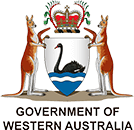Bacterial infections
Bacterial infections can affect many parts of your body. Find out about bacterial infections, how they are treated and how to stop them spreading.
Read more
Necrotising fasciitis
Necrotising fasciitis is a serious bacterial infection that spreads quickly through the body. Learn why early diagnosis and wound care are crucial.
Read more
What is the difference between bacterial and viral infections?
Bacterial and viral infections can have similar symptoms but are treated differently. Find out more about bacterial and viral infections.
Read more
Leptospirosis
Leptospirosis is a bacterial infection that occurs in some humans and animals in humid conditions. Learn what you can do to prevent it.
Read more
Anthrax
Anthrax is rare in Australia. It is a serious bacterial infection you can catch from contact with infected animals or animal products.
Read more
Leprosy
Leprosy is a bacterial infection that mostly affects your skin and nerves. Leprosy is rare in Australia and can be easily treated with antibiotics.
Read more
Cefalexin (Cephalexin)
Cefalexin is used to treat bacterial infections. Read how cefalexin works; what the risks are and other treatment options available.
Read more
Abscesses
Abscesses are painful collections of pus that build up and get ‘walled off’ by your body under the skin or in other areas. Learn how to treat abscesses.
Read more
Campylobacter infection
Campylobacter infection causes gastroenteritis, but most people recover in 1-2 weeks with rest and fluids. Learn about symptoms and treatment here.
Read more
Osteomyelitis
Osteomyelitis is an infection of the bone. Read about symptoms, causes and treatment of osteomyelitis, and how you can prevent permanent bone damage.
Read more









